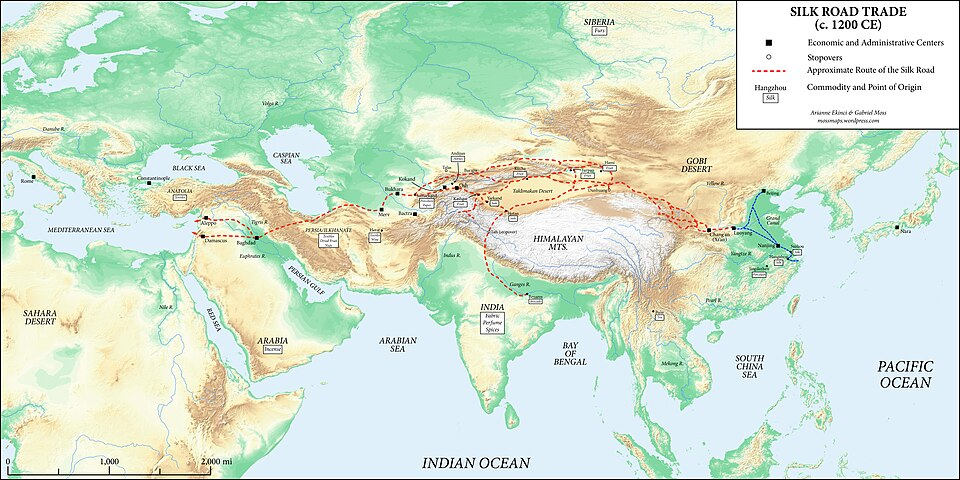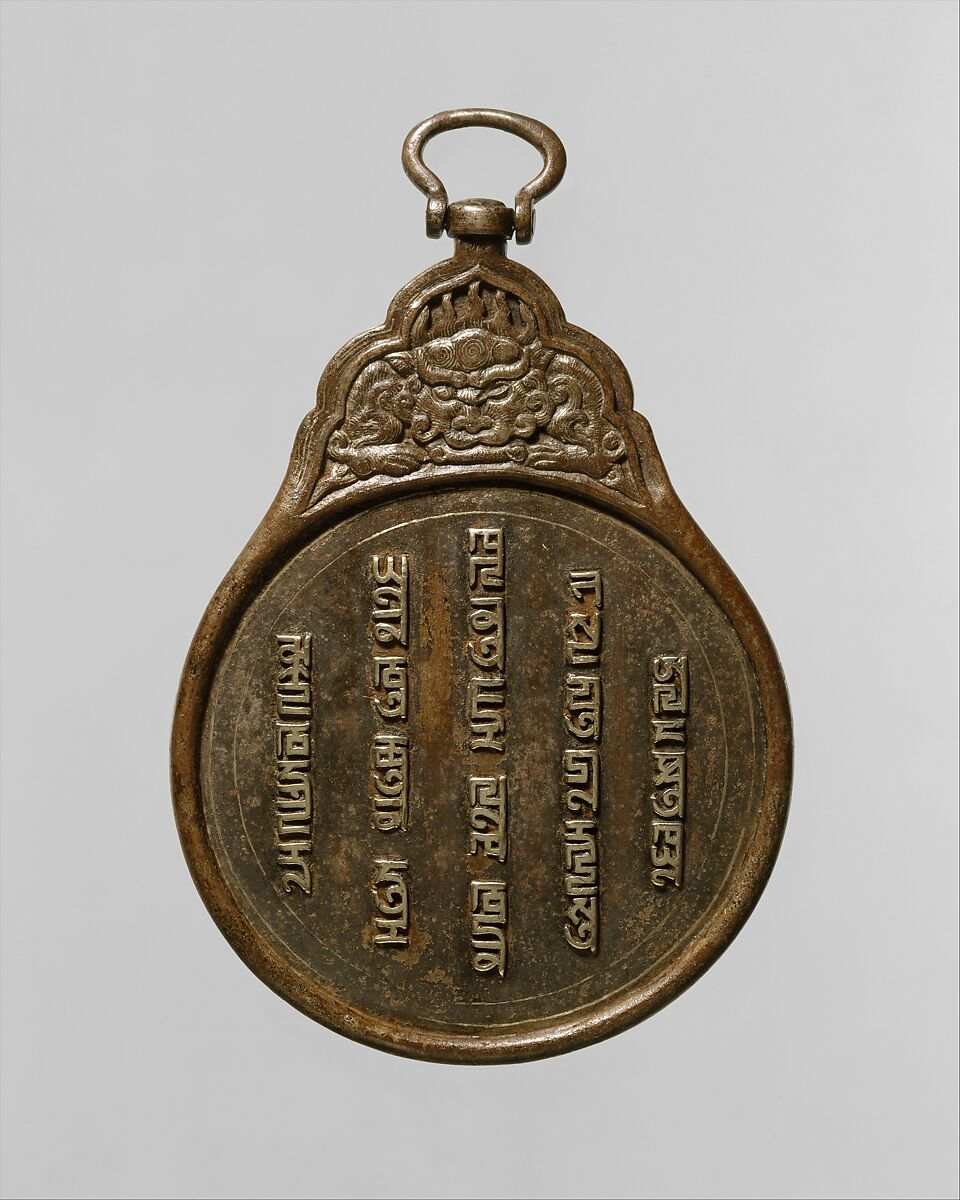IB Syllabus focus:
'The administrative changes introduced under Genghis Khan, including the establishment of Mongol law (Yassa) and the shift towards meritocracy.
Economic impacts, focusing on how the Mongols established, enhanced, and protected trade routes, and how these actions affected the empire's wealth and relations with other states.
The political aftermath of the conquests, including the treatment of conquered peoples and the integration of their territories into the Mongol Empire.'
Under Genghis Khan's leadership, the Mongol Empire ushered in notable political and economic changes. This set of notes will explore these changes, assessing the introduction of administrative reforms, the bolstering of economic structures, and the political consequences following Khan's expansive conquests.
Administrative Changes
Mongol Law (Yassa)
Introduction and Significance: Genghis Khan's formulation of the Yassa marked a groundbreaking shift in the administrative arena of the Mongol Empire. It aimed to establish a set of universal laws that would apply to all subjects, irrespective of their ethnicity or status.
Content and Features:
Oral Tradition: Although primarily transmitted orally, its mandates became widely known and obeyed across the empire.
Legal Provisions: These encompassed a wide array of spheres, ranging from criminal laws (such as strict prohibitions against theft and murder) to more social customs, like the treatment of guests.
Religious Freedom: The Yassa granted freedom of religious practice, provided it didn't challenge Mongol authority or societal harmony.
Impact on Governance: The introduction of this codified set of rules ensured there was a semblance of uniformity in governance. It also provided a backbone of regulations, helping prevent disputes and chaos, thus enhancing stability across the vast empire.
Shift Towards Meritocracy
Breaking Tradition: Traditionally, tribal societies, including the Mongols, relied heavily on familial and tribal connections when allocating roles and responsibilities. Genghis Khan revolutionised this by emphasising capability over connections.
Impact on Governance:
Efficiency and Skill: Roles, especially within the army and administration, were allocated based on competence, ensuring a more effective governance structure.
Loyalty: This system allowed individuals from diverse backgrounds to rise to prominence, fostering a sense of loyalty directly to Genghis Khan and the central authority, rather than to individual tribes.
Economic Impacts
Trade Routes: Establishment and Protection
The Silk Road's Renaissance: Historically significant but often fraught with danger, the Silk Road experienced a resurgence under the Mongol Empire. This network of trade routes connected Europe, the Middle East, and Asia, facilitating the exchange of goods and ideas.

Map of major Silk Road routes and key exchange goods around 1200 CE, when Mongol unification increased overland connectivity. While the commodity icons add extra detail beyond the syllabus, they help explain why security and communication mattered economically. Source
Safety Measures:
Yam System: This ancient courier system was revitalised and expanded. It comprised relay stations and hostels at regular intervals, ensuring speedy communication and safe passage for traders.

Bronze paiza (safe-conduct pass) with Phagspa script, granting the bearer imperial authority to obtain mounts, lodging, and protection across Mongol relay roads. Although this example dates to Khubilai Khan’s period, it exemplifies mechanisms that underpinned the security and efficiency of trade and communication begun earlier. Source
Strict Enforcement: The Mongol military patrolled trade routes vigilantly, ensuring the security of merchants and punishing bandits with severity.

Interior of Sultanhanı Caravanserai (Anatolia, 1229), a fortified inn spaced along major routes to shelter caravans, animals, and goods. While not a Mongol-built structure, it exemplifies the regional network of caravanserais that thrived under Mongol-secured trade, supporting taxation and commercial exchange. Source
Impact on the Economy: With trade routes secured, there was a marked increase in trade activity. This not only bolstered the empire's economy through taxes and trade revenues but also made the Mongol Empire a vital hub of commerce and cultural exchange.
Empire's Wealth and International Relations
Accumulation of Wealth: Enhanced trade, combined with the tributes from subjugated territories, swelled the empire's coffers, making it one of the wealthiest empires of its time.
Diplomatic Endeavours: The amassed wealth wasn't just hoarded; it was used strategically. The Mongols funded diplomatic missions, sent gifts to foreign rulers, and established trade agreements, further integrating the Mongol Empire into global economics and politics.
Political Aftermath of the Conquests
Treatment of Conquered Peoples
Carrot and Stick Approach: Genghis Khan's approach was twofold. Cities and regions that surrendered peacefully were often treated leniently, with their local customs and leaders respected. Conversely, those that resisted were met with brutality, serving as a cautionary tale to others.
Demographic Changes: In certain instances, after conquests, local populations were relocated. This served dual purposes - rewarding loyal tribes with better lands and strategically displacing potential rebels.
Integration of Territories
Semi-Autonomous Rule: While the Mongol Empire was vast, it was not governed homogenously. Many regions, especially those far from the capital, enjoyed a degree of autonomy, with local leaders administering day-to-day affairs, albeit under the overarching Mongol framework.
Cultural and Administrative Fusion: The empire, in its zenith, became a melting pot of cultures. This was not just a by-product of conquest but a deliberate strategy. Genghis Khan often incorporated experts from various fields, irrespective of their ethnic background, into his administration. For instance, Chinese experts contributed to siege warfare techniques, while Persian administrators played roles in governance.
Religious and Cultural Assimilation: The empire's vastness meant it was home to a myriad of religious practices and cultural customs. Genghis Khan's policy of religious tolerance, rooted in the Yassa, allowed for a harmonious coexistence of these diverse groups. This not only prevented religious uprisings but also contributed to the rich tapestry of Mongol culture during this era.
This era, marked by Genghis Khan's leadership, saw the Mongol Empire transform into a political and economic powerhouse. The administrative foresight combined with economic robustness and pragmatic politics laid the foundation for an empire that would shape the course of history.
FAQ
Genghis Khan's shift towards meritocracy had profound implications for the traditional Mongol tribal dynamics. Traditionally, leadership roles and significant positions were reserved for those with influential familial or tribal connections. By focusing on individual capabilities and skills, Genghis Khan disrupted this status quo. As competent individuals from varied backgrounds rose to prominence, tribal loyalties began to diminish, replaced by a stronger loyalty to the central Mongol authority. This strategic move not only increased efficiency in administration and military endeavours but also diluted potential tribal factionalism, reducing internal strife and consolidating Genghis Khan's control over the vast empire.
Under Mongol patronage, several cities and regions experienced an economic renaissance, thanks to the empire's emphasis on trade. Cities like Samarkand and Bukhara in Central Asia, once key stops on the Silk Road, regained their status as major trade hubs. Additionally, the Mongol conquest of the Khwarezm Empire opened up trade routes that brought immense prosperity to the region. In China, cities such as Hangzhou experienced significant growth, benefiting from the trade of silk, paper, and porcelain. These cities didn't just serve as commercial hubs; they also became centres of cultural and intellectual exchanges, drawing merchants, scholars, and artisans from across the known world.
Despite the Yassa being primarily passed down through oral tradition, its enforcement was robust. The Mongols relied on a system of local leaders, military officers, and judges who were well-versed in the provisions of the Yassa. These individuals were tasked with interpreting and applying the Yassa in their respective jurisdictions. Furthermore, Genghis Khan's emphasis on meritocracy meant that these positions often went to those genuinely competent, ensuring a consistent interpretation of the law. Regular gatherings and meetings also served as platforms to discuss and refresh knowledge on the Yassa. Moreover, the fear of strict Mongol punishments acted as a deterrent, ensuring adherence to these laws.
The Yassa was particularly progressive in its approach to religious practices. Understanding the vast diversity of the Mongol Empire, Genghis Khan prioritised religious tolerance. The Yassa specifically granted freedom of religious practice, ensuring that all subjects, regardless of their faith, could worship without fear of persecution. This decree was not solely a sign of magnanimity; it was a strategic move. By allowing religious freedom, the Mongols avoided potential religious uprisings and rebellions. This not only ensured internal harmony but also facilitated smoother administration, as various religious groups felt a degree of autonomy and respect within the greater Mongol framework.
Indeed, the Mongol Empire's focus on securing and promoting trade routes led to various significant economic alliances. One of the most notable was the relationship established with the merchants of the Muslim world. The Mongols granted them special privileges, recognising the value of their trade networks and the goods they brought, particularly from the Middle East. Additionally, in their interactions with the Song Dynasty of China, the Mongols established trade agreements that facilitated the exchange of Chinese silk, porcelain, and other goods with the West. These alliances not only boosted the Mongol economy but also helped in the diffusion of culture, technology, and knowledge across the empire.
Practice Questions
The introduction of the Yassa by Genghis Khan represented a significant step towards a structured and unified legal system within the Mongol Empire. It laid down universal laws, transcending tribal affiliations, and ensured that governance maintained consistency and fairness across vast territories. This uniformity bolstered internal stability. Concurrently, Genghis Khan's move towards meritocracy marked a departure from the traditional tribal norms that prioritised lineage over capability. By promoting individuals based on their skills and merits, he not only ensured the Empire's governance and military were highly efficient but also fostered a direct loyalty to the central authority, thus reducing tribal factionalism and enhancing administrative cohesion.
Under Genghis Khan's leadership, the Mongol Empire prioritised the revival and protection of key trade routes, most notably the Silk Road. This rejuvenation led to a significant increase in trade activity, making the empire an epicentre of commerce. Merchants, assured of their safety due to vigilant patrolling by Mongol military and the efficient Yam courier system, were more willing to undertake long trading journeys. As a result, the empire experienced a surge in its wealth through taxes and trade revenues. Simultaneously, the emphasis on trade routes elevated the Mongol Empire's international standing. By fostering trade agreements and diplomatic relations, the empire integrated itself into global economic and political networks, cementing its role as a pivotal player in the medieval world.

